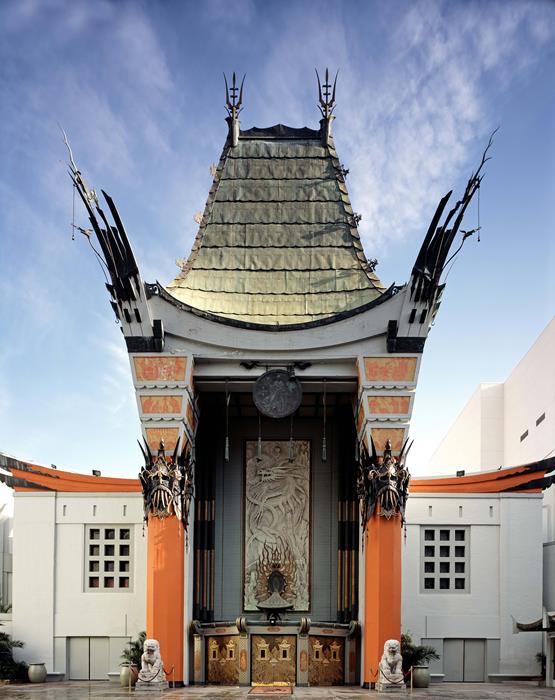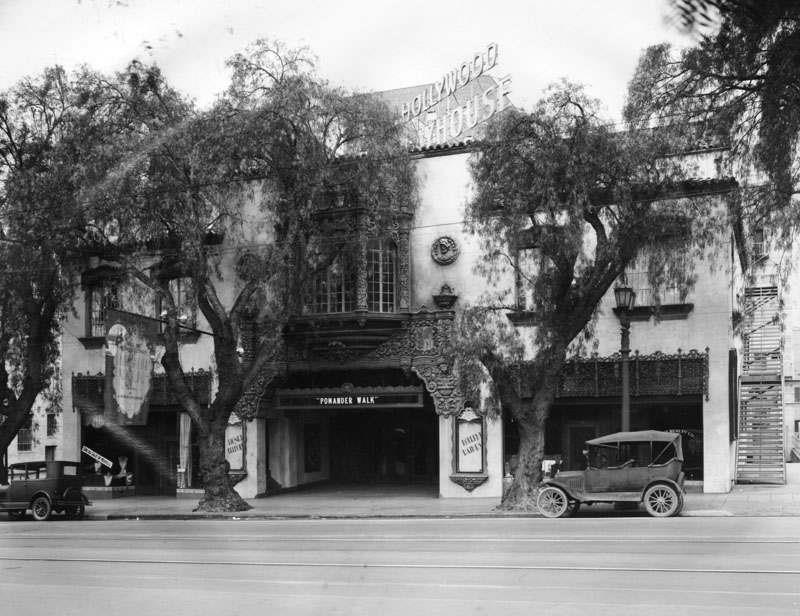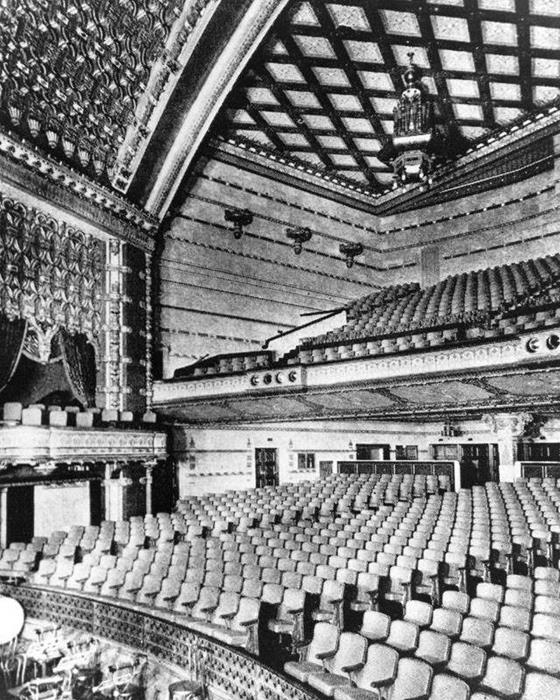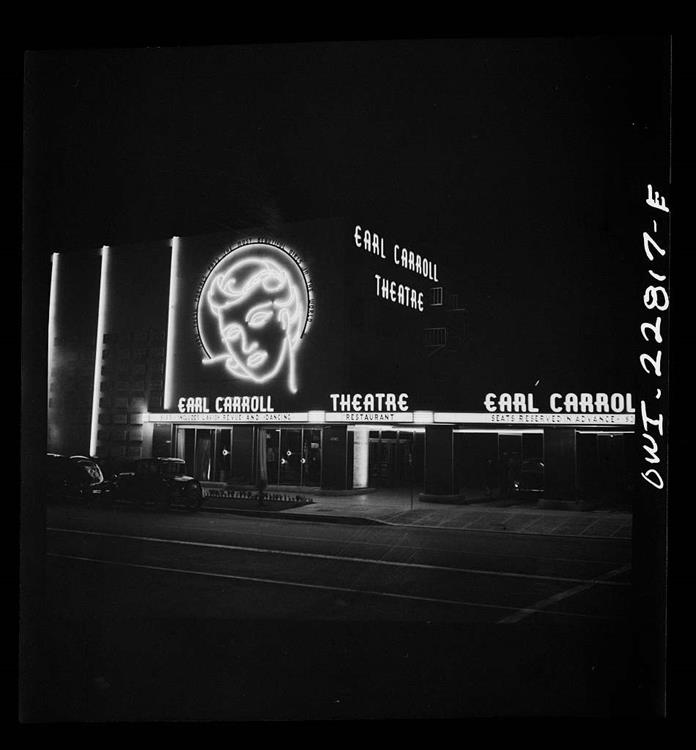Famous Movie Theaters of the 1930s: Where Hollywood Magic Happened

Imagine stepping into the 1930s, where Hollywood's iconic movie theaters weren't just venues but gateways to a world of glamour and storytelling. The Egyptian Theatre and the Chinese Theatre were surrounded by opulence and star-studded premieres. These theaters were more than just places to watch films; they were cultural landmarks that defined an era. As you explore the halls of the Pantages or the El Capitan, you'll discover how these grand spaces transitioned from vaudeville to cinema, forever changing the entertainment landscape. Curious about the tales these walls could tell?
Historical Development of Hollywood Theatres
In the early 20th century, Hollywood emerged as the epicenter of the film exhibition world, starting around 1910. As the residential community and film industry flourished, the number of movie houses grew exponentially. These venues ranged from modest storefronts to grand movie palaces that showcased the latest cinematic advancements.
Iconic venues such as the Music Box (now the Fonda Theatre), Hollywood Playhouse (now Avalon), and El Capitan significantly contributed to Hollywood's vibrant theatre scene. These grand movie palaces were not just places to watch films; they offered immersive experiences with their ornate architecture and luxurious interiors, transporting audiences to another world.
During this period, movie houses often hosted elaborate premieres, drawing enthusiastic crowds eager to glimpse Hollywood stars. The opening of Grauman's Chinese Theatre shortly after the Egyptian Theatre amplified Hollywood's cultural significance, making it a destination for star-studded events. The Pantages Theatre also played a key role before transitioning to a Broadway house, reflecting Hollywood's evolving entertainment preferences.
The development of these theatres established Hollywood's enduring legacy as the epicenter of film and glamour, creating a timeless allure for moviegoers.
The Egyptian Theatre

The Egyptian Theatre stands as one of Hollywood's pioneering movie palaces, realized through Sid Grauman's vision. Opened in 1922, this theater, renowned for its elaborate Egyptian-themed decor, set a new standard for film exhibition. The Egyptian Theatre hosted the premiere of the silent film "Robin Hood," starring Douglas Fairbanks, solidifying its status as a significant venue for film debuts.
The Egyptian Theatre offered more than just movies; it provided a full sensory experience. Featuring a large screen, an orchestra, and a Wurlitzer organ, patrons enjoyed live music and performances before the main feature. This combination of visual and auditory spectacle made every visit memorable.
Throughout the 1930s, the Egyptian Theatre became a hub for Hollywood's elite, frequently hosting star-studded events and movie premieres, earning its iconic reputation.
| Feature | Description |
|---|---|
| Opening Year | 1922 |
| Initial Premiere | "Robin Hood" starring Douglas Fairbanks |
| Key Elements | Large screen, orchestra, Wurlitzer organ |
| 1930s Reputation | Hub for Hollywood's elite |
Today, after numerous renovations and ownership changes, the Egyptian Theatre continues to serve as a cultural landmark and a premier venue for film screenings and festivals.
The Chinese Theatre

The Chinese Theatre, originally opened as Grauman's Chinese Theatre in 1927, swiftly became an iconic venue for Hollywood premieres and red carpet events, epitomizing the glamour of the film industry. Designed by Sid Grauman, the theatre boasts a distinctive Chinese-inspired architectural style, featuring a grand pagoda roof and ornate hand-painted murals. This unique design made it a standout location in Hollywood, attracting both celebrities and film enthusiasts.
A renowned feature of the theatre is its forecourt, where the handprints and footprints of numerous Hollywood stars are embedded in cement. This tradition began with Norma Talmadge and has since become a cherished homage to cinematic history.
- Architectural Style: Chinese-inspired, with a grand pagoda roof and hand-painted murals
- Forecourt: Handprints and footprints of Hollywood stars
- Academy Awards Venue: Hosted the first Academy Awards in 1929
- Renovations: Modern projection technology added in the early 2000s
- Cultural Landmark: A symbol of Hollywood's golden era
The Chinese Theatre also served as the initial venue for the Academy Awards in 1929, solidifying its status as a cultural and historical landmark. Despite undergoing major renovations in the early 2000s to include modern projection technology, it has preserved its historic charm and architectural integrity.
Music Box (Fonda)
While the Chinese Theatre dazzled Hollywood with its Chinese-inspired architecture and celebrity handprints, another iconic venue also left its mark on the 1930s film scene: the Music Box Theatre, originally known as the Fonda Theatre. Opened in 1926 and designed by architect S. Charles Lee, this theater showcased an enthralling mix of films and live performances. Its stunning Art Deco design and intricate interior detailing made it a standout among movie theaters of its time.
With a grand auditorium boasting over 1,200 seats, the Music Box Theatre became a popular venue for Hollywood premieres. In the 1930s, it was known for screening major films, which elevated its reputation in the film industry. The combination of its aesthetic appeal and the high-profile events it hosted cemented its place in Hollywood's history.
The theater underwent renovations in the late 1990s, restoring its historical features while updating its technology for modern film presentations. Today, the Fonda Theatre operates as a live music venue and event space, preserving its legacy as a significant cultural landmark in Hollywood. Its enduring presence reminds us of the golden era of movie theaters and their role in Hollywood's rich history.
Hollywood Playhouse (Avalon)

You'll love learning about the Hollywood Playhouse, originally called the Avalon, which opened in 1927 with a seating capacity of approximately 1,200. Known for its opulent design, it hosted both live performances and film screenings, becoming a hotspot for Hollywood's elite in the 1930s. Over time, it transitioned into a music club while preserving its historical charm, and it continues to entertain audiences today.
Opening and Early Performances
When the Hollywood Playhouse opened in 1926, it instantly became a beacon of entertainment in the heart of Hollywood. This theater emerged as a vital cultural hub during the 1930s, encapsulating the excitement and vibrancy of Hollywood's golden age. The venue was much more than a theater; it was a place where dreams materialized.
In its early years, the Hollywood Playhouse featured a blend of theatrical productions and film screenings, catering to a diverse audience. Patrons were enthralled by the variety of shows that adorned its stage, making those years truly unforgettable:
- Live theatrical performances showcasing Broadway's finest.
- Movie premieres that attracted Hollywood's elite.
- Special community events that captivated locals.
- Adaptation to economic challenges, including the Great Depression.
- A reflection of evolving entertainment trends, solidifying its cultural significance.
The Hollywood Playhouse's ability to adapt and captivate audiences cemented its status as a cornerstone of Hollywood's entertainment industry. It wasn't merely a theater; it was where the magic of Hollywood came alive.
Architectural Design and Features
The Hollywood Playhouse, also known as Avalon, stands out with its distinctive Art Deco architectural design, embodying the glamour and opulence of the 1930s. Upon approaching the theater, the neon-lit marquee and facade immediately capture the lively spirit of the era, making the Hollywood Playhouse an inviting landmark that draws visitors into its elegant embrace.
Originally opened in 1920, the venue underwent significant renovations in the late 1930s, transforming its interior with ornate details and plush seating. These enhancements not only added comfort but also elevated the overall aesthetic, ensuring that every visit felt like a special occasion. The architectural design of the Hollywood Playhouse was meticulously crafted to accommodate a variety of performances, from live theater to musical acts, underscoring its versatility as a cultural venue.
The theater's historic significance is undeniable, having hosted numerous popular performances and events that contributed richly to Hollywood's vibrant entertainment scene during the 1930s. As you step inside, you can't help but feel connected to that golden era, where every detail of the architectural design narrates a chapter of Hollywood's storied past.
Transition to Music Club
Transition to Music Club
During its shift from the Hollywood Playhouse to Avalon, the venue embraced Hollywood's evolving entertainment landscape by transforming into a vibrant music club. Originally opened in 1926 as a legitimate theater, the building has continually adapted to reflect Hollywood's dynamic nature. By preserving architectural elements of the original theater, Avalon maintains its historical significance while catering to modern audiences.
Avalon is not just a music club; it's a celebration of live performance culture. Over the years, it has become a hotspot for concerts and events, playing a key role in Hollywood's energetic nightlife and music industry. The transformation embodies the venue's commitment to both historical preservation and contemporary entertainment.
- Retains original architectural charm.
- Hosts a variety of music acts.
- Contributes to Hollywood's nightlife.
- Serves as a bridge between past and present entertainment.
- Plays a crucial role in preserving theatrical heritage.
At Avalon, you can enjoy the best of both worlds—a piece of Hollywood's storied past combined with the excitement of live performances today. As one of the few remaining historic theaters still in operation, it stands as a symbol of the enduring allure of live entertainment.
El Capitan Theatre

El Capitan Theatre, a standout among Hollywood's iconic landmarks, boasts a rich history and striking Spanish Colonial Revival architecture. Opened in 1926, this historic venue originally hosted live performances before transitioning to film, playing a vital role in Hollywood's entertainment history. Today, it is renowned for showcasing major Disney releases and hosting special events, particularly since its restoration in the 1990s.
Stepping inside El Capitan, visitors are immediately captivated by its grandeur. The theater features the Mighty Wurlitzer organ, played live before screenings to enhance the cinematic experience with a touch of old-school charm. The impressive 86-foot-wide movie screen—one of the largest in the country—further underscores the theater's commitment to high-quality film presentation.
El Capitan is more than just a place to watch films; it is a cultural landmark. By frequently hosting premieres and events, it continues to contribute meaningfully to Hollywood's storied tradition of entertainment.
The Pantages Theatre

Originally opened in 1930, the Pantages Theatre is a renowned example of Art Deco design, conceived by architect B. Marcus Priteca. Located on Hollywood Boulevard, this historic venue initially served as a prominent vaudeville house before transitioning to film exhibitions. With a seating capacity of over 2,800, the Pantages Theatre quickly became one of the most grand and opulent theaters of its era.
The theatre's rich history is marked by several key milestones:
- Vaudeville beginnings: Initially, the Pantages hosted a variety of vaudeville acts, drawing large audiences.
- Hollywood premiere: In 1929, the theatre hosted its first Hollywood premiere, "The Hollywood Revue of 1929".
- Art Deco splendor: The lavish interior and exterior design are quintessential examples of Art Deco style.
- Broadway shift: By the 1940s, the Pantages shifted focus from movies to Broadway productions, solidifying its reputation for live performances.
- Restoration and revival: After closing as a movie house in the 1970s, the theatre underwent significant restoration and now serves as a premier venue for Broadway tours and live shows.
Today, the Pantages Theatre continues to enchant audiences with its historical charm and vibrant performances.
Earl Carroll Theatre

The Earl Carroll Theatre, which opened its doors in 1938, quickly became a dazzling hub for live entertainment in Hollywood. Known for its lavish Ziegfeld-style revues, the theatre featured an extravagant design that included a massive mural of famous showgirls on its exterior and a grand interior showcasing Art Deco elements. This 1,200-seat venue hosted numerous notable performances and musical acts during its peak, making it a cornerstone of Hollywood's entertainment scene.
| Feature | Description | Highlight |
|---|---|---|
| Opening Year | 1938 | Ziegfeld-style revues |
| Design Style | Art Deco | Massive showgirl mural |
| Seating Capacity | 1,200 seats | Prominent live shows |
The theatre was especially famous for its "Earl Carroll Vanities," lavish musical revues that emphasized beautiful performers and elaborate staging. These shows epitomized the glamour and opulence of Hollywood's golden age. Despite its initial success, the Earl Carroll Theatre faced financial difficulties and ultimately closed in the late 1950s, marking the end of an era for a venue with a long history of enchanting audiences.
The theatre's elaborate concrete structure and grand design remain iconic, even as it has sought new tenants or owners to revive its once-glorious status.
Century Theatre
Century Theatre, a gem of Hollywood's golden era, opened its doors in 1922, immediately becoming a prominent venue for film enthusiasts. This opulent movie palace seated 750 patrons and showcased films until a tragic fire in the late 1980s ended its storied existence.
Renowned for its lavish design and remarkable architecture, the Century Theatre was one of the cinema gems of its time. Its grandiose interiors and exquisite details epitomized the elegance of early 20th-century movie theaters, greatly contributing to Hollywood's cultural landscape.
Throughout its operational years, the Century Theatre hosted numerous film premieres and events, solidifying its place in Hollywood history. Patrons flocked to this iconic venue to experience the magic of cinema in a setting as enchanting as the films themselves.
- Opened in 1922, seating 750 patrons.
- Known for its opulent design and architecture.
- Hosted numerous film premieres and events.
- Tragically destroyed by fire in the late 1980s.
- Its legacy lives on as a reminder of Hollywood's lively past.
The closure of the Century Theatre marked a considerable loss for the community, representing a bygone period of cinematic grandeur. Despite its demolition, the legacy of the Century Theatre endures as a testament to Hollywood's rich history and the architectural beauty of historic movie theaters.



